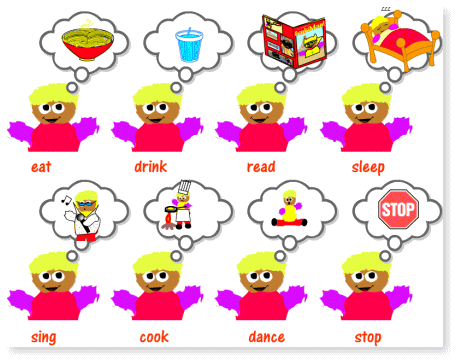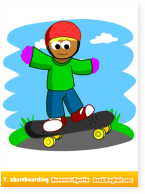The 3 Types of Demo Lessons (+ Red Square Video!) Genki English |  |
| The 3 Types of Demo Lessons (+ Red Square Video!) Posted: 18 Nov 2013 05:55 PM PST This post is long, I was thinking of splitting it, but it had so many tips, I kept it as it is. You might want to grab a cup of coffee! Whilst I don’t often do demo lessons, I was asked to do a few when I was over in Russia, partly to counter the “this works great for adults but what about kids?” attitude from teachers, plus of course the organisers wanted to make sure Genki English works like we say it works! And luckily enough with 3 different classes we ended up with the 3 different types of demo class. Type 1: The “Show” Super Easy Showy Off Class Pros: Guaranteed to be a success and create a “wow” impression
This is the content I use when you have to give a good show to impress everyone or if you’re not sure what the kids will be like. The key is to be totally in control and get discipline from the start with the TPR Warm Up, straight into the Genki English rules (“I can do it!” & “Try again!” ) and the Disco Warm Up. This establishes a fun atmosphere, but more importantly it lets you control the class for the activities to come, you say “Stand up” and you know they are going to do it straight away! Content wise the What’s your name? song is always a hit because the kids are all talking and excited amongst themselves, plus the Superhero song gets such a great atmosphere. You pretty much can’t go wrong with this content, whatever the kids’ (or adults!) ages. The main disadvantage is that you’re usually not teaching anything new, so it is more like a show than a real lesson. Ninja Tip: Classrooms in Russia have interactive whiteboards so we got the superhero software game on there, everyone, kids and teachers, were very impressed with the use of technology – usually it’s just used for playing videos! . Type 2: The hybrid – pushing it a touch! Pros: Nice balance of “guaranteed hits” & something new In the second class I did the Disco Warm Up to get the discipline, then the Eat! Drink! Dance! song. (The kids were different, but the teachers were the same so I wanted to show a variety of lessons.) These were 5th grade kids in Russia (i.e. very good!) so I wanted to push a little more so tried the What do you want to do? lesson. Here I put the “Words 2″ flashcards on the board …
But as I pointed to the first one, instead of them just saying “I want to eat” they continued on and said “I want to …” with all of them! So far too easy! And of course in a real class if that happens you move on, there’s no point doing activities for this type of thing if they already know it all. So I got my interpreter to ask them “OK, what are you studying at the moment?” To which they replied, in English, “present continuous.” Perfect! This very neatly leads into the What are you doing? song & game So I told them to “Eat!” and then asked them “What are you doing?” to which we had a load of blank faces. They understood the words ”present continuous” but not the phrase ”What are you doing?” So after teaching the new phrase using the song (songs are always the best way to teach new phrases/grammar points) we did the Harry Potter game. As the language was still new you could see the class teacher beginning to move a little uncomfortably in her seat as she watched her kids give a not perfect, and often stumbling, performance. But this is why we do the games, to get practice and get better, not to rehash something they know perfectly. Ninja Tip: The key with any of these group games is to quickly explain it, then get into the game as soon as you can. Then shut it down after 2 or 3 minutes so you can explain any misunderstandings of rules, or more often, to re-review the new language using the “Words 2.” You can do this many times and it’s a great way to add in more repetitions of the English without losing any motivation. Plus you can also add in extra things like telling kids to shout out “help” if they are trapped, or telling everyone to work together as a team more if they are just running around and not helping anyone! Needless to say by the end of the class they were fluent with the question and answers. Well done everyone, job done! . Type 3: The Brand New Lesson! Pros: This is real! As the kids so far were so good with actually learning new material for the final school I wanted to teach something brand new that they hadn’t done before. The idea here is that you can show the materials to their full effect and how much more fun and efficient they are compared with traditional ways of teaching. The risk, of course, is that if you don’t know the kids well or they haven’t done the previous material well, it can all go pear shaped. So only do these types of “real lessons” as demo classes if you are really confident.
Needless to say the teacher was now very proud of her students and was saying she knew they could do it all along! . Which will you choose? So those are your three options when you come to do demo lessons, a show, a hybrid or something new. Of course it’s up to you to choose which you want to do, and what you are trying to achieve with the demonstrations. But don’t be afraid of taking risks every now and again, even the failures teach us a lot and adrenaline is always a good thing! I hope you liked the post and it wasn’t too long, do let me know what you think in the comments! Plus a massive thank you to Elena for organising and pushing me to do this, and of course Julia for creating the precedent the week before! P.S. We don’t have videos of the lessons (yet!), but here’s a quick movie of me in Red Square at the end of the trip!
|
| You are subscribed to email updates from Genki English To stop receiving these emails, you may unsubscribe now. | Email delivery powered by Google |
| Google Inc., 20 West Kinzie, Chicago IL USA 60610 | |




 I knew these kids could do it, and I also really wanted to teach this lesson myself, so we did the
I knew these kids could do it, and I also really wanted to teach this lesson myself, so we did the
No comments:
Post a Comment
Make a Nice Comment .....